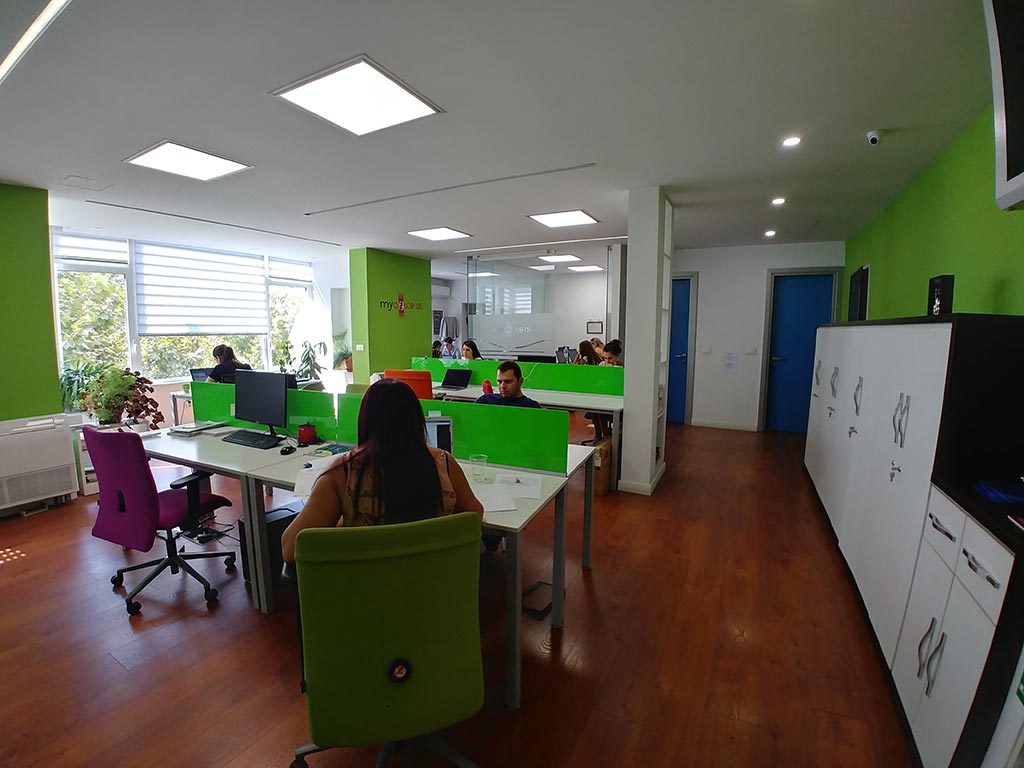Open plan office workers 'more active, less stressed'
Lifestyle and exercise

'Staff in open plan offices are fitter and less stressed' The Guardian reports
"Staff in open plan offices are fitter and less stressed," The Guardian reports on a study of how different work environments affected employees' health. Specifically, researchers looked at levels of physical activity and self-reported stress.
The US study took 231 government employees who worked in either "open bench" seating (open plan offices), cubicles or private offices. They studied them over 3 working days and 2 nights. They looked at their physical activity using heart monitors, and assessed their stress and mental wellbeing before, during and at the end of the study.
Overall, they found that people who worked in open bench seating had 32% higher levels of physical activity at work than those in private offices, and 20% higher levels than those in cubicles. They also had lower self-reported stress levels at work and home.
However, this study only measured people for a short period. So, it cannot prove that the work environment was directly affecting people's physical activity and stress levels, or whether this was a coincidence.
The researchers make a number of suggestions about why open plan offices may be the healthier option – for example, because they may encourage people to move around more during the day. And they suggest open plan offices may actually help cut down on noise pollution (and related stress) as people tend to move away to a quieter place in the office for phone calls. These are all plausible but unproven suggestions.
Getting active, whether at work or at home, is important whatever kind of job you do. Read more advice about increasing your daily activity levels.
Where did the story come from?
The study was carried out by researchers from the University of Arizona, the US General Services administration in Washington DC, Baylor College of Medicine in Texas, and several other research organisations. It was funded by a US General Services Administration contract and published in the peer-reviewed journal Occupational and Environmental Medicine.
The reporting of this study in the UK media was generally good. Some of the media correctly noted that the design of the study makes it hard to know whether this was a cause-and-effect relationship.
What kind of research was this?
This was an observational study in which the researchers looked at people's normal working environment and took various measures of their health and wellbeing over a short period of time.
This approach can give us a snapshot of some of the differences between people's day-to-day experiences. However, we don't know if the relatively short period the employees were observed for was typical of their normal experience. It's possible that because they were being studied, they may have modified their behaviour in some way.
The best way to test out the effect of office seating type on health would be to carry out a longer version of this study over the course of many months, or to randomise people to different work environments and assess their health in each.
What did the research involve?
Researchers identified adult office employees from a number of government buildings in the US that had a range of different desk-based working environments. People working in sections of these buildings were given approval to join the study if they wished. All participants described themselves as healthy. Pregnant women, and people with pacemakers or insulin pumps, were excluded. If people were taking medication that could affect their heart rate, this was noted but they were not excluded.
People's office workstations were grouped into 3 categories:
- private offices, which were completely enclosed by walls
- cubicles, defined as desks surrounded by high-walled partitions that people cannot see over when seated
- open bench seating, with no or low partitions between desks
People's jobs were grouped into categories such as computer-dominant, managerial or technical, depending on what they did.
Each participant was given a questionnaire to complete. They also wore a heart and physical activity monitor on their chest for 3 work days and 2 nights. During the study they were sent surveys via smartphones every hour during the working day, which asked them questions about their wellbeing including their mood. At the end of the study, people were given one final questionnaire to assess their stress levels.
What were the basic results?
In total, 248 people volunteered to take part (12% of those working in the offices being studied) and 231 of those were able to enrol. Of these, 8 people were only observed for 2 days instead of 3.
Participants who were based in open bench seating were 31.83% more physically active at work than those in private offices. They were also 20.16% more physically active in the office than workers in cubicles.
People who worked in open bench seating also perceived themselves to have less stress in the office than those in cubicles (on average, 9.10% lower). They also had lower levels of stress measured by heart rate outside of the office.
How did the researchers interpret the results?
The researchers said their study was the first to show a potential benefit of open plan seating on physical health. They noted, however, that there is little evidence at this time explaining how the 2 things may be linked.
Conclusion
This study made some interesting observations about differences in employee health and wellbeing across different working environments. However, it has a number of limitations, which make it hard to generalise the results.
All the people taking part described themselves as healthy to start with. We don't know if people with particular health problems may find some working environments more or less stressful than others.
This study was not designed to explore cause and effect. It's possible that people in open plan offices are more active as a consequence of the nature of their job, not because the desk layout forces them to be more active. It is also possible that people in open plan work environments have generally less stressful jobs than those in other types of offices.
Not everyone in the selected sections of the offices participated in the study. The people who volunteered to take part may have been different in some way to the ones who didn't. For example, they may have been less busy and felt more able to take part. Or they may have had stronger positive or negative perceptions of their working environment than the people who did not join in.
It's also possible that preferences regarding the best type of office environment might vary between cultures. People from some cultures may prefer quieter working environments, while others may prefer more sociable arrangements. So results from a study in the US may not apply to offices in other countries.
There are many ways you can get more active and reduce your stress levels, whether at home or at work – see our pages on exercise and tackling stress.






 Subscribe
Subscribe Ask the doctor
Ask the doctor Rate this article
Rate this article Find products
Find products






